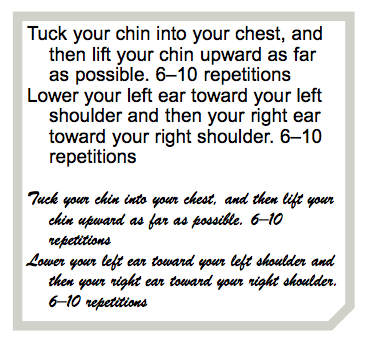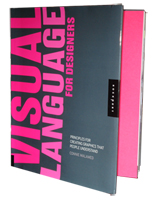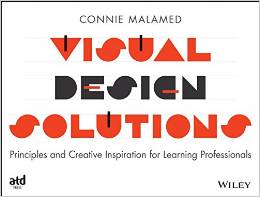
If you’re interested in improving the positive appeal of your visual communications, then you may want to understand how to make them more fluent. When we think of fluency, it’s often in terms of language ability—the ease with which someone expresses spoken or written ideas. But here we’ll be looking at another aspect of fluency that relates to the ease with which a person processes information. Known as processing fluency, it is significant to the world of design and visual communication because it influences a viewer’s affective response to a work.
High Fluency Facilitates a Positive Response

Some cognitive researchers are having a field day studying processing fluency. They’re demonstrating that it affects all types of judgments and the decisions that result from those judgments. For example, when people in one study viewed easy-to-read instructions on how to perform a new exercise, they thought the exercise would be easy and quick to perform. These instructions were displayed in an Arial typeface.
When the exact same instructions were displayed in the Brush typeface, which is less legible (see example above), subjects thought the exercise would be difficult to perform and would take almost twice as long to get through. (Song and Schwarz, 2008).
Researchers had a similar result when they presented a recipe in both an easy- and difficult-to-read typeface. The Arial typeface influenced readers to assume the recipe would take less time to prepare and participants were more willing to prepare it themselves. The Mistral typeface (less legible) influenced participants to think the recipe would require more skill to prepare.
These and similar studies demonstrate that although people are sensitive to their own feelings of ease or difficulty, they do not seem to be aware of what causes these feelings. Thus, incidental factors beneath the level of awareness often affect the emotional experience of the viewer.
Processing Fluency Affects Aesthetic Experience
Other studies have focused on how ease of processing information influences a person’s aesthetic pleasure. One group of researchers convincingly theorize that a positive aesthetic experience is grounded in how easy it is to process an object’s information (Reber, Schwarz, Einkielman, 2004). Thus, the perceived “goodness” or beauty of a work depends on how fluently a person processes the work, which is based on its features.
The types of features that facilitate fluent processing include many of the traditional attributes of aesthetic beauty. These are:
- Symmetry (vertical symmetry in particular)
- High figure-ground contrast
- Visual clarity
- Less information rather than more
The authors suggest that at a very basic level, high fluency is associated with a good feeling because the attributes noted above speed up successful recognition of a work and encourage correct processing and interpretation of it. Perhaps this provides a sense of comfort, because it makes an external object feel familiar and unlikely to be harmful.
Final Thoughts
These and many other studies demonstrate that incidental variables affecting the ease with which information is processed influence how a person experiences an object or event. It speaks volumes for the importance of design in both explicit and subtle terms. Certainly, ensuring there is visual clarity and promoting high fluency in web pages, instructions, slides, infographics, user interfaces and other forms of visual communication is a basic requirement.
As many designers know, turning these ideas on their head should also work to facilitate the opposite effect, such as when purposely creating mystery or complexity. For example, one researcher suggests that if restaurants wish to make their recipes seem complex or difficult to perform, their menus should be designed with a more difficult-to-read typeface. The implications for design practice are limitless.
References:
1. Song, H. & Schwarz, N. (2008). If it’s hard to read, it’s hard to do: Processing fluency affects effort prediction and motivation. Psychological Science, 19, 986–988
2. Reber, R., Schwarz, N. & Winkielman, P. (2004). Processing fluency and aesthetic pleasure: Is beauty in the perceiver’s processing experience? Personality and Social Psychology Review, 8, 364–382.


{ 3 trackbacks }
{ 4 comments… read them below or add one }
This is very interesting. It’s not surprising that clarity in information is obviously easier to process but the fact that it adds on emotional factor is quite intriguing.
Hi Magda,
It is unbelievably intriguing to me, especially how it provides aesthetic pleasure. Who knew?
Connie
The recipe one made me chuckle.
Find a recipe online, make enough for two using the Arial instructions. Then print menus for the evening using Mistral for added brownie points with your significant other =p
Hi Andrew — I’m sure many people will take your advice =D